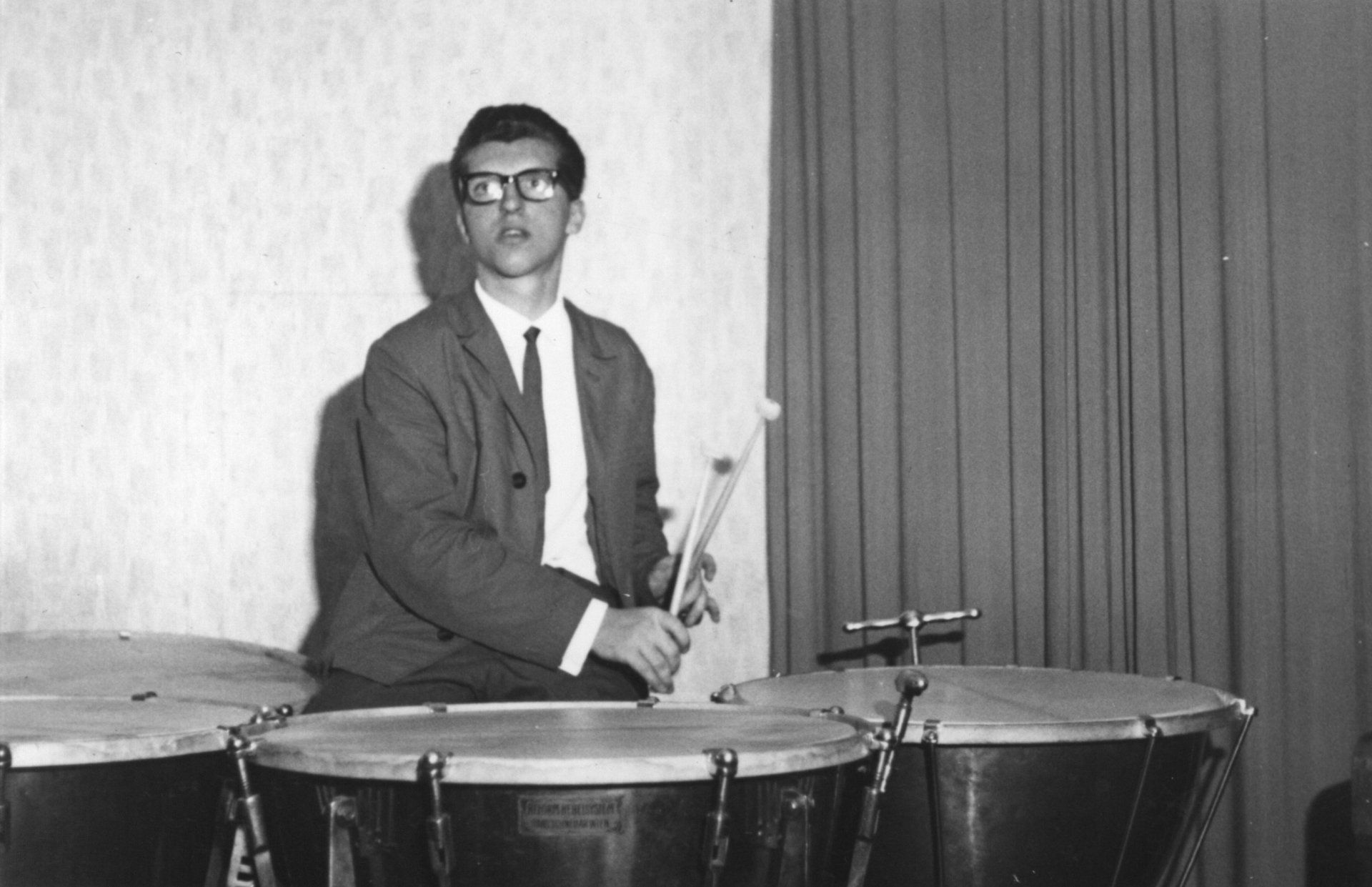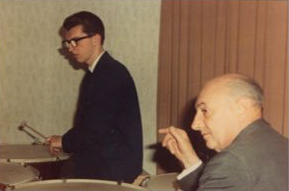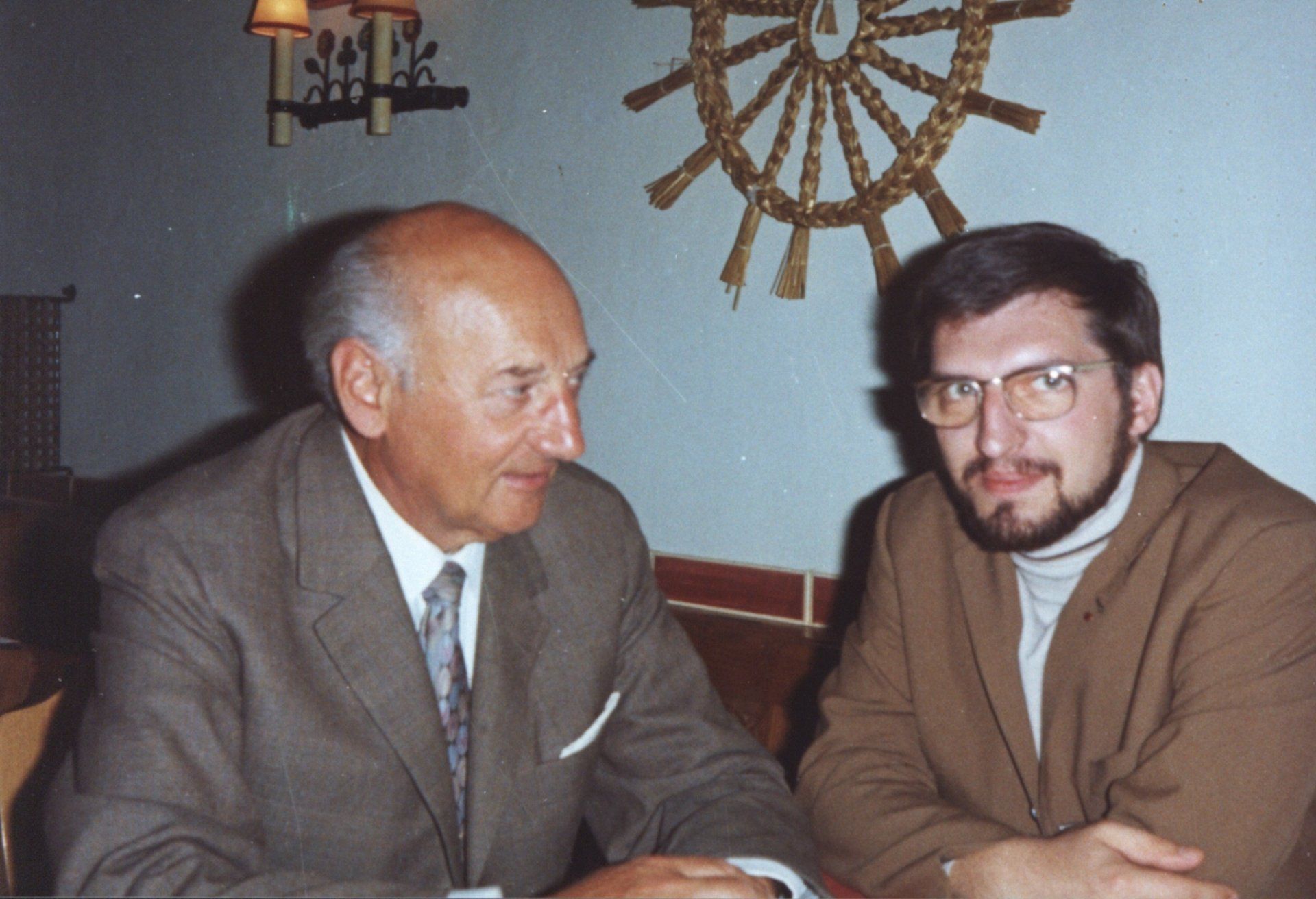Prof. Gerald Fromme (1947-2017) The father of the "real Viennese mallet"
Prof. Mag. Gerald Fromme
was born in Vienna in 1947. As the son of art-loving parents, he soon came into contact with important personalities from the Viennese acting and music scene. Fromme began his musical education at the age of 8 in the subjects piano, cello and voice.
In 1963, he enrolled at the then Vienna Music Academy in the field of study “composition” and with Richard Hochrainer, the “father of the Viennese timpani school”, the concert subject “percussion”, which he graduated with distinction. He received the honorary award from the Federal Ministry of Education and the Arts from the then Minister of Education. During his studies, Fromme mainly worked in Viennese orchestras and ensembles, including innumerable times with the Vienna Philharmonic, the Vienna Symphony Orchestra, and in the Vienna State Opera under well-known conductors such as Herbert von Karajan, Karl Böhm, Josef Krips, etc.
In 1965, he became a founding member of the Ensembles "Kontrap points", permanent member of the ensemble "die reihe" and shortly afterwards accepted the invitation to work as a freelancer in what was then the "Great Vienna Radio Orchestra".
In 1970
he became the solo timpanist of the Austrian Radio Symphony Orchestra. In the same period, Fromme began producing the traditional “Viennese timpani and percussion mallets”, which from then on enjoyed great popularity at home and abroad. In the following years, valuable friendships developed with international artists, such as Milan Horvat, Giuseppe Sinopoli, Leonard Bernstein, Hiroyuki Iwaki, Leif Segerstam, Claus Christian Schuster, Stefan Vladar, HK Gruber, Kurt Schwertsik, Nikolai Lugansky, Andrey Boreyko, Michael Boder, Yuri Bashmet and many others.
In 1982
Fromme took up a teaching position at the Vienna University of Music. In 1983
he founded his ensemble "ORF-Supercussion". His arrangements of Zappa's "Black Page" and Georg Kreisler's "The Triangle" earned him worldwide recognition. This is followed by appearances as a soloist, in which he premieres HK Gruber's “Rough Music” drum concert dedicated to him.
In 1986
he was appointed full professor of percussion instruments at the University of Music in Graz, as well as a composition commission from the Society for Music Theater in Vienna for the ballet "The Two Crowns".
In 1989
Fromme completed his teaching position at the Vienna University of Music. In 1992
he was commissioned to compose the ceremony on the occasion of the 25th anniversary of the ORF. The "Fixed Fanfare" for percussion ensemble will be premiered live on TV by the ORF Supercussion.
In 1995
Fromme was awarded the academic title of Magister Artium. Well-known musicians emerge from his work as a university professor, who hold top positions as teachers, soloists and orchestral musicians.
In February 2009
Fromme left ORF RSO WIEN and now devoted himself to teaching, acted as a mentor and advisor for the further development of the instruments of the Viennese timpani workshop and was primarily concerned with the recreation of the "real Viennese mallet".
In October 2015
Fromme retired from the Graz University of Art, handed over his mallet production to Andreas Steiner in 2016 and is now only available as a consultant.
On January 25, 2017, Gerald Fromme died unexpectedly in his seventieth year.
Prof. Gerald Fromme on his mallet series "Fromme - Echter Wiener Schlegel" for the Viennese timpani workshop
Known worldwide and independent, the "Viennese flannel mallet"
Its origin in the middle of the 19th century Stacked loden cloth discs (flannel) compressed with a threaded cap as the head of a timpani mallet was most likely in the area between Prague in the middle of the 19th century. Berlin-Leipzig practiced for the first time and was probably not a Viennese invention. The fabric discs of the original flannel mallet were certainly already attached to a wooden handle, which is the most important distinguishing feature to this day. Even if Vienna cannot boast the authorship of the flannel mallet, this type of mallet, probably in connection with its special tonal suitability for works of the Viennese classic, has become the "Viennese flannel mallet" and has spread worldwide.
The further development of the "Viennese timpani mallets"
by Prof. Mag. Gerald Fromme, Vienna 2013
In the 1960s, Prof. Richard Hochrainer, solo timpanist of the Vienna Philharmonic, taught his student Gerald Fromme the art of mallet production.
At that time there were only flannel mallets with a head size of around 40mm. There were felt and wooden mallets as a sound alternative, i.e. a total of three types.
The significant difference in sound of flannel mallets that had been played in for years compared to new mallets gave young Gerald Fromme the idea of producing different sizes of flannel heads.
The result was revolutionary and led to an enormous enrichment of the tonal possibilities when playing the timpani.
The "Vienna felt mallet"
A felt mallet with unique selling points. During Fromme's studies in the 1960s (and probably before that), the timpani of the Vienna Philharmonic used played flannel mallets as the "core" for their felt mallets. The mallet head was unscrewed, the disks covered with “piano felt”, put on a threaded handle and, like the flannel mallet, pulled together again using a threaded screw made of horn.
This construction with the “flannel core” produced a good sound volume when the whirl was loud, but was unsuitable for articulated playing. So Fromme decided to build this "screwed" felt mallet with a cork core. Later he expanded his range and also built the "Wiener Filz" with a felt core and differently thick covers made of hard-wearing industrial felt.
The "Wiener Holzschlegel"
An Austrian specialty.
With this type of mallet Gerald Fromme created a special feature. He gave it the name "Wiener Holz". This mallet is not a "real" wooden mallet, but is a cork mallet covered with special felt or deerskin. What special properties does this type of mallet have?
If you want to produce clay volume with a timpani mallet with a wooden head on natural skins in the Fortissimo, the mallet head must not be too small. For example, beech wood of a reasonable size would be too heavy. The alternative would be a very light wood like some balsa. However, the density of this material is only between 0.1 - 0.2 g / cm³ and corresponds to about a third of the density of beech. In conclusion, such a mallet head would be much too large and no longer manageable.
Up to a medium dynamic, it is recommended to play the beater with bare wooden heads without any problems, but beyond that the “Wiener Holzschlegel” offers the same sound character as wood, but with a much larger sound volume, without running the risk of “overdriving the timpani head”.
Original hard felt
The "micro mallet"
The hard felt mallet is a real "pious invention"! An approx. 1 cm thick, rounded hard felt disc with a diameter of approx. 3 to 4 cm is attached to a threaded handle.
Prof. Hochrainer was enthusiastic about Fromme's invention and called it the “microphone mallet”. This mallet produces a very clear and rather slim tone, which the record company DECCA preferred on their premier timpani in the studio of the Sophiensäle in the 1960s, because in contrast to today their studio microphones were not yet sophisticated enough to allow quick arches (or high-pitched timpani). with authentic goat skin covering.
The "wooden mallet"
The entire shape of the Fromme wooden mallets is simple and essentially the same as that of a flannel mallet. The mallet heads in different sizes, shapes and types of wood have different tonal characteristics and can therefore be used for timpani with a wide variety of bowl sizes and coverings.
Baroque mallet
"The artistic design of the shaft was ornate, playful and imaginative. Some of the heads were already covered with leather.
The pious baroque mallet model "Ellegance" was built from an original template from the 17th century and improved at the same time.
A large selection of models also enables a high degree of artistic and individual development on the instrument in this flail segment!








